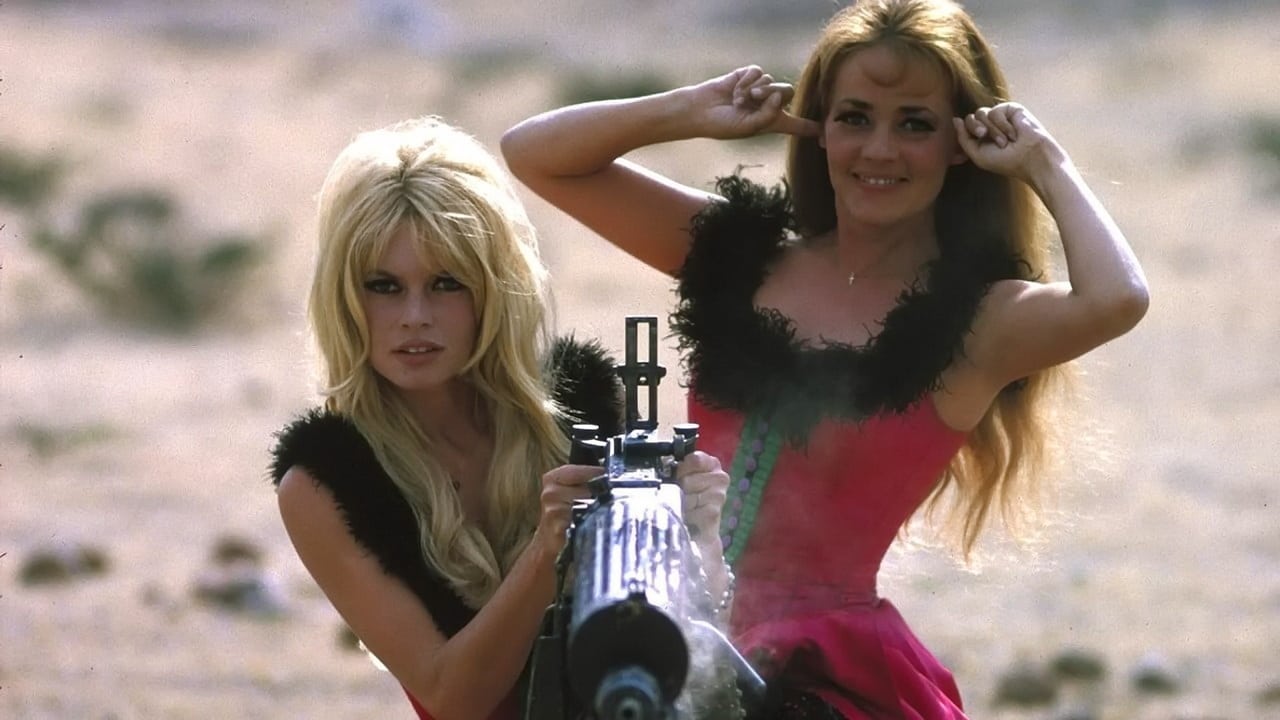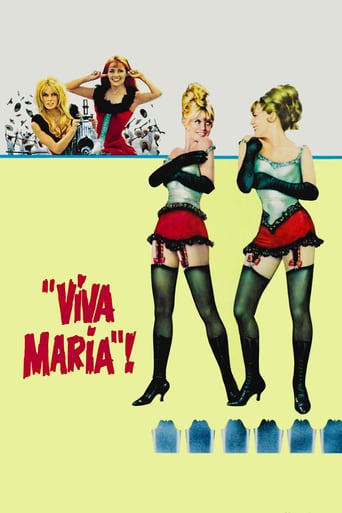

Like Barot & Moreau? Easily pleased? Like lots of simplistic colour and movement? - this could be your show. It's a typically messed-up international co-production made for little reason other to exploit the teaming of two French beauties, one of whom was worthy of far better things (that's the late great Moreau of course). The script & direction (both Louis Malle), action and settings, are filled with subpar predictability and waste the talents of top French cinematographer Henri Decae and composer Georges Delerue. American society pretty boy George Hamilton, is reduced to the level of a guest star even though included in the main male line up. He is clearly the token American to boost the international sales. This is totally unworthy, unless you're into women simplistically flaunting their underwear to cover the lack of quality writing. Make better use of your time.
... View MoreThis film begins with a little girl and her father blowing up everything British. It seems they are Irish revolutionaries and again and again, you see them attacking things in the UK and then later in their colonies. In what had to be British Honduras (Belize), the girl is now older and is played by Brigitte Bardot--a very, very odd choice to play an Irish lady! She is forced to blow up a bridge with her father on it, so soon she embarks on a solo career.A bit later, Maria (Bardot) happens upon a French traveling show in Central America and another Maria (Jeanne Moreau) makes her part of her act. For now, the more lethal Maria stops killing people and spends her time singing and being wined and dined by various men. However, when the other Maria (Moreau) falls in love with a handsome revolutionary (George Hamilton), things change. Hamilton is soon killed by the cruel general and so Moreau vows to continue his revolution. It goes badly at first---until the mad bomber Maria joins the fight. Then the two ladies lead a successful revolution and become folk heroes.The film is a bizarre combination of action, adventure, music and comedy. Frankly, I didn't think all that much of the comedy and didn't laugh at their exploits. It was mildly interesting but that's all. In fact, it all seemed a tad lightweight and silly.This, to me, was a curious misfire from writer/director Louis Malle. The film is nothing like the more serious movies he was later known for and didn't particularly impress me. It is entertaining in a mindless sort of way and Bardot was a knockout to look at, but that's really about it.
... View MoreIn her native France, Brigitte Bardot enjoyed at the height of her career a similar reputation to that enjoyed by, say, Audrey Hepburn or Elizabeth Taylor in Britain; a great screen actress who also happened to be a great beauty. In the English-speaking world, however, Bardot's reputation was rather different, more that of a great beauty who also happened to be "well, she's obviously an actress of some sort, but I can't actually think of anything she's ever been in". She was idolised by millions of men who had never seen any of her films, possibly the only actress to become an international sex symbol without any help from Hollywood.Although "Viva Maria!" was a French film, it was also released in an English-language version, which gave some of those men a chance to see their idol on the screen without worrying about subtitles. The film is based around a similar concept to that in "Gentlemen Prefer Blondes", that of teaming a famous blonde sex symbol with a brunette equivalent. Like Marilyn Monroe and Jane Russell in the original, Bardot and Jeanne Moreau differed not only in colouring but also in their screen persona. The blondes, Monroe and Bardot, both retained a sort of girlish innocence throughout their careers, whereas the brunettes Russell and Moreau, both several years older than their blonde counterparts, had more of a "sexy older woman" air about them. Although Bardot was 31 when she made this film, she was still often referred to as a "sex kitten" and great play was made of the fact that, in French, her initials BB were pronounced like the word for "baby". I doubt if anyone ever called Jeanne Moreau a kitten.The film is set in Central America in 1907. Bardot plays Maria, an Irish revolutionary on the run after blowing up a bridge in a British colony, presumably British Honduras. (Exactly why the interests of Irish nationalism required the destruction of a bridge in a remote part of that territory is never explained). She is befriended by a Parisian actress, also named Maria, who is performing with a travelling circus touring the area, and they cross the border into a neighbouring banana republic, where, after inadvertently inventing striptease, they become caught up in a popular uprising against the country's dictator.Louis Malle, although not part of the "Nouvelle Vague" movement, is today best remembered as the auteur director of serious films like "Le Soufflé au Coeur" and "Au Revoir Les Enfants", so I was surprised to learn that he was also responsible for a frivolous comedy like this one. There is some satirical content to the film, mostly reflecting France's own revolutionary, anti-clerical traditions, but nothing too serious. The Catholic Church is shown as a reactionary force on the side of the dictator, who relies heavily on the Holy Inquisition, portrayed as having survived into the first decade of the twentieth century. (In reality the Inquisition was abolished everywhere in Latin America upon independence from Spain). This satire, however, is so over-the-top that it is unlikely to be taken seriously. (Malle was later to make "Au Revoir Les Enfants", which can be seen as a deeply pro-Catholic film).Contrary to what some on this board have assumed, this is not a film about the Mexican Revolution; indeed, one reviewer devotes most of his review to a lengthy analysis of what he considers to have been the causes of that revolution, which is rather missing the point, for two reasons. Firstly the film, although shot in Mexico, is not actually set there but in the fictitious Republic of San Miguel. Secondly, despite a certain amount of satire this is not a serious film about politics but a light-hearted, slightly bawdy, comedy, the sort of film the "Carry On" team might have made had they turned their attention to Latin American politics. Although if the "Carry On" team had made it the two Marias would have been played by Barbara Windsor and Hattie Jacques, who might have lacked that certain "je ne sais quoi" of Jeanne and Brigitte. The film owes a lot, in fact, to the charm and sex appeal of its two heroines; it may be a light, frothy romp, but it is a very enjoyable one nevertheless. 6/10
... View MoreLoius Malle made a lot of serious, European-set films, so 'Viva Maria!', a comedy musical western, certainly represents an oddity in his catalogue. With Brigitte Bardot on board, you might think he couldn't have gone very far wrong. Unfortuantly, the dubbing of the English language version (reviewed here) is so appalling (and the choice of dialogue so dire) that you might be better off switching off the sound and enjoying it as a silent film, as there's only actually one song but a lot of visual comedy. A few details are nice, and in places Malle has fun with his camera, but overall the effect is more Carry-on than 'Moulin Rouge!'. The film also shows its age in its very sixties portrayal of liberated women. Overall, a sadly mediocre movie, made interesting only by the glimpse of its star.
... View More